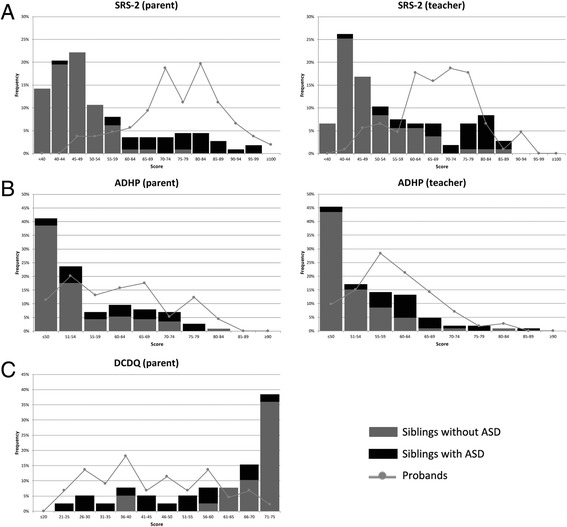Fig. 1.

Score distributions of siblings and probands. a SRS-2 T scores. b CBCL/TRF ADHP T scores. c DCDQ age-adjusted scores. For SRS-2, CBCL, and TRF, a higher score indicates more severe impairment. For DCDQ, a higher score represents better functioning. For the SRS-2, a T score of 30 is the minimum obtainable. A total T score of 76 or higher is consistent with severe clinical-level symptomatology, a T score of 60 through 75 subclinical, and a T score of 59 or less as normal. For the CBCL and TRF, a T score of 50 is the minimum obtainable. A T score between 65 and 70 is considered borderline clinical and a score above 70 as clinical. SRS-2 Social Responsiveness Scale-2, CBCL/TRF ADHP DSM-oriented Attention-Deficit/Hyperactivity Problems Scale, from Child Behavior Checklist/Teacher Report Form, DCDQ Developmental Disorder Coordination Questionnaire
